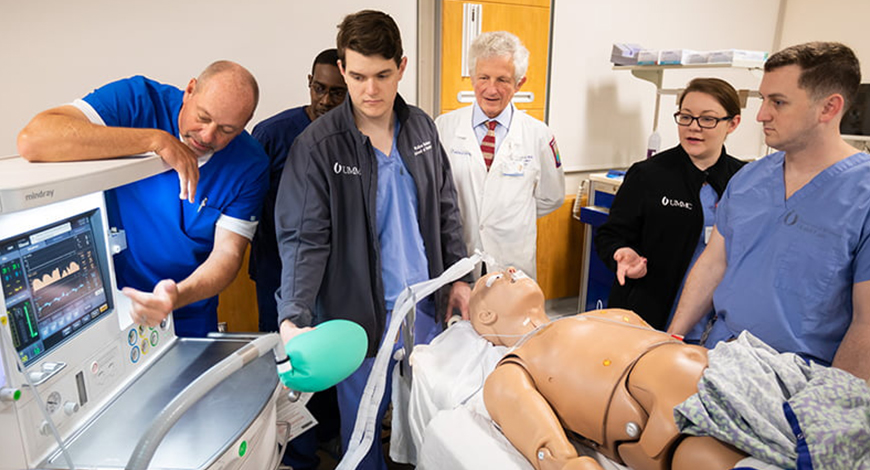Anesthesia Equipment
Anesthesia touches new horizons

Advances during the last several decades have led to important improvements in clinical-monitoring technology and clinical-practice development, not only in patients undergoing surgery or in patients being cared for in intensive care units, but also in ambulatory patients.
It was October 16, 1846, when the world was shaken with the advent of general anesthesia. It has taken over 175 years for this specialty to get modernized. Concretization of this specialty was possible in 1933 with Henry Dale’s discovery of neuromuscular transmission with acetylcholine, along with the therapeutic use of neuromuscular blocker d-tubocurare by Harold Griffith and Johnson. Then, was the march of newer muscle relaxants, along with newer molecules of inhalational anesthetics. The progress was compounded with anesthesia and drug-delivery system. Dignity of the specialty has galloped with anesthesia equipment, and the ultimate is the safety equipment.
Advances during the last several decades have led to important improvements in clinical-monitoring technology and clinical-practice development, not only in patients undergoing surgery or in patients being cared for in intensive care units, but also in ambulatory patients. In addition, anesthesiologists worldwide have developed standards for continuous real-time monitoring of hemodynamics, oxygenation, ventilation, neurological status, urine output, core temperature, the degree of neuromuscular blockade, as well as other items, all of which have also contributed significantly to patient safety.
Technology trends
One of the most fascinating things about medicine, and anesthesiology in particular, is the near-constant advances in medical technology and their implications. It is evident that the anesthesia market is moving toward a fully integrated system. Most of the hospitals are upgrading their old basic anesthesia-delivery system to anesthesia workstations with comprehensive patient-monitoring system. Modern anesthesia machines use advanced electronics, software, and technology to offer extensive capabilities for ventilation, monitoring, inhaled agent delivery, low-flow anesthesia, closed-loop anesthesia, electronic record keeping, and so on. These developments have really helped the clinicians to deliver safe anesthesia to their patients.
Two-gas or three-gas system, with dual cascaded tubes, along with a fully integrated ventilator, which supports control and support ventilation mode, is still the highest selling product. Many vendors are improving this segment by adding better features such as integrated EtCO2 and gas measurements, dual-flow sensing for better ventilation control, electronic flow measurements, bigger screen for accommodating more patient parameters, and low and minimal flow application.
More and more users are showing interest in electronic flow control, which is with better accuracy, especially for low- and minimal-flow anesthesia applications. With electronic flow control, the consumption also can be monitored. This helps in saving gases and costly agents. Integrated anesthesia gas module, combined with patient monitor having depth of anesthesia and muscle-relaxation monitoring, brain-function monitoring, and the like, are commonly seen on such high-end anesthesia workstations.
MRI-compatible anesthesia machine is becoming more popular and is sometimes treated as a statutory requirement inside the MRI room. Nowadays, most of the new purchase of MRI equipment is packaged with MRI-compatible anesthesia machine, MRI-compatible patient monitor, MRI-compatible pumps, laryngoscopes, suction, and the like.
Some of the other developments the market has encountered recently include:
Anesthesia information-management systems (AIMS) with intraoperative monitoring-device connectivity will provide powerful decision-support tools with real-time clinical guidance, utilizing machine learning algorithms to predict things like hypotension long before they occur clinically.
Artificial intelligence (AI) will transform patient care with advanced early warning systems (EWS) that utilize wireless surveillance to leverage algorithms for pattern recognition, allowing computers to detect slight variations in data with human-applied clinical rules (algorithms) that recognize patient deterioration and automatically activate interventions like rapid-response teams, and reduce mortality to zero.
Cardiovascular imaging with AI software will automate calculation of left ventricular ejection fraction, making this a new standard vital sign for procedures, using intraoperative cardiac echography.
Pre-operative testing will be performed in virtual clinics by a cognitive assistant-type platform that will complete repetitive tasks and engage patients through interactive patient portals to capabilities, and a wide range of clinical knowledge. This automated routine work will support clinical decision-making, and free clinicians to focus more on direct patient communication and complex care decisions.
Patients will have 24/7 access to virtual nurse avatars, who will help manage home medications and provide health assistance and coaching on healthier choices that support lifestyle changes.
Wearable home devices will be able to detect an asthma attack before it happens, and new biosensor devices with ECG electrodes and triple-axis accelerometers will track heart rate, rhythm, breathing, temperature, steps, and even detect body position in case a person has fallen. They will be no longer need to ask patients how active they are, or if they have had any falls or have been compliant with pre-habilitation exercises because these devices will be able to share this information to improve shared decision-making with the patients.
Ingestible sensors and drug-device combination products will be able to monitor medication effectiveness and offer the ability to objectively track patient compliance. Imagine better-supporting families, who are caring for family members with dementia or serious mental illness, or even confirming the absence of illegal drugs to improve patient care and outcomes.
A novel anesthetic agent will be available that combines the sedative-hypnotic drug properties of current medications with a rapidly titratable intravenous delivery system, with a high therapeutic index and minimal side effects. This will go beyond small modifications of current medications like a proposed remimazolam and move us into a new generation of anesthetics yet to be discovered.
Outlook
The next 10 years will be challenging, no doubt; the redesigning of healthcare delivery will develop to meet the demands of new payment methodologies while pursuing continued innovation that personalizes patient-specific care, improves vigilance and patient safety through machine learning, virtual assistants, and early warning surveillance systems.












